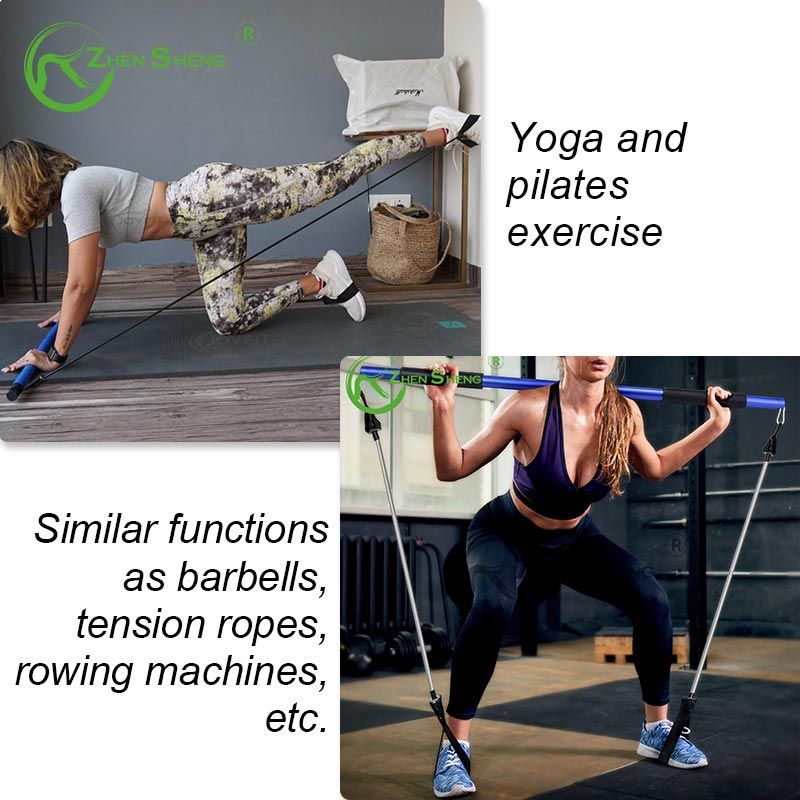The Pilates bar is a fitness tool that can help strengthen muscles, improve posture and balance, and increase the challenge and effectiveness of exercise. When using the Pilates bar, proper use and technique is essential. This article will introduce some of the ways and techniques of using the Pilates bar to help you make better use of it for fitness.
(1)Choosing the right Pilates bar
When purchasing a Pilates bar, the following factors need to be considered.
Length: The length of the Pilates bar should be appropriate for your height and arm length. If the bar is too long or too short, it will be difficult to perform the correct movements.
Weight: The weight of the bar should be appropriate for your strength level. If the Pilates bar is too heavy, it will put excessive stress on your muscles and joints. If the Pilates bar is too light, you will not achieve the desired results.
Material: The Pilates bar should be made of strong and durable material to avoid breakage or damage during use.
(2)Correct bar grip
When using the Pilates bar, the following things need to be noted.
Grip on the bar: The Pilates bar should be gripped in the position of the round ball at each end. When holding the bar, the hand should be close to the ball, the fingers should be relaxed and the wrist should remain neutral.
Keeping the shoulders relaxed: While holding the bar, the shoulders should be relaxed and not lifted or tightened.
Keep the spine neutral: The spine should always be neutral and not overly bent or extended during the use of the Pilates bar.
(3)Common Pilates bar movements
Scapular contraction: Holding the ends of the Pilates bar, straighten your arms forward, relax your shoulders and then slowly contract your shoulder blades back until you feel a contraction between the bones of your shoulder blades. Repeat 10 times.
Seated bar pushing movement: Sit on the floor and place the Pilates bar behind your shoulders, holding the ends. Then, slowly push the Pilates bar upwards until your arms are straight. Repeat 10 times.
Lying Leg Raises: Lie on the floor and place the bar under your feet, holding the ends. Then, slowly lift your legs upwards until they are at a 90 degree angle to your body. Hold this position and slowly lower your legs and repeat 10 times.
(4)Precautions
When using the Pilates bar, the following things need to be kept in mind.
Don't over challenge yourself: If you are a beginner or have a low level of strength, don't choose movements that are too complex or too difficult. You can start with simple movements and gradually increase the difficulty.
Avoid monotony: don't do the same movements all the time, try different movements and combinations to increase the challenge and effectiveness.
Be safe: When using the Pilates bar, you need to make sure there are no obstacles or dangerous objects around to avoid accidents. If you have any concerns or discomfort, you should stop using the Pilates bar and seek professional advice.
In conclusion, the Pilates bar is a very useful fitness tool that can help strengthen muscles, improve posture and balance, and increase the challenge and effectiveness of exercise. Correct use and technique is essential and I hope this article will help you to make better use of the Pilates bar for fitness.

Comments
Post a Comment